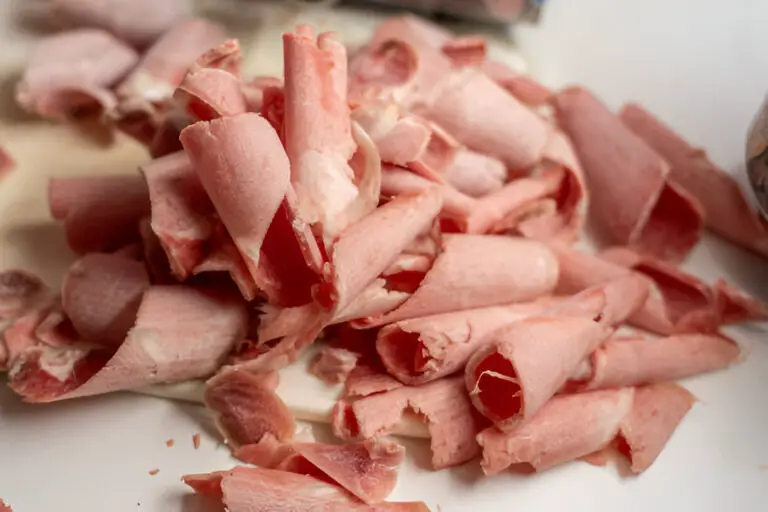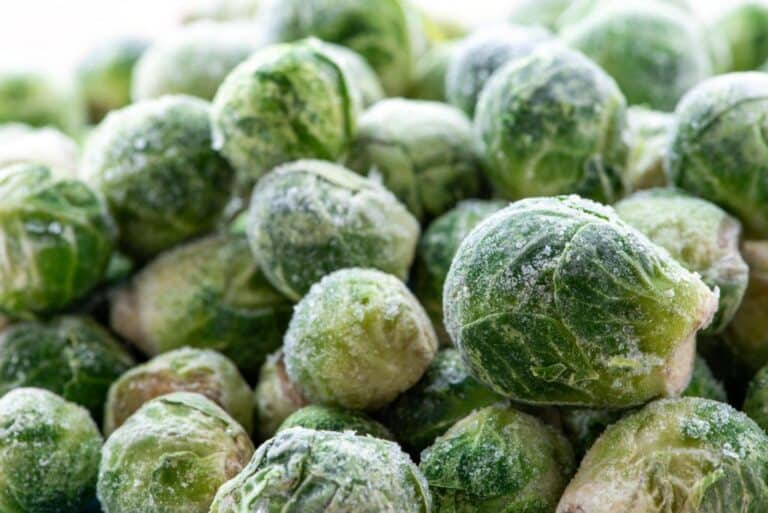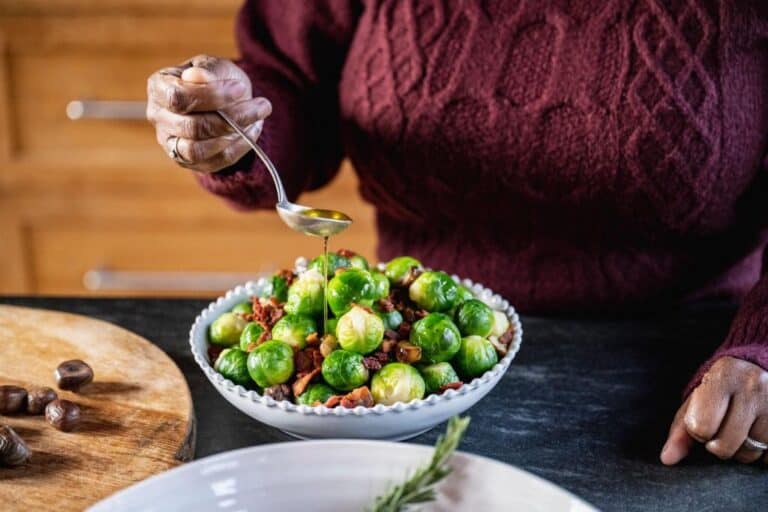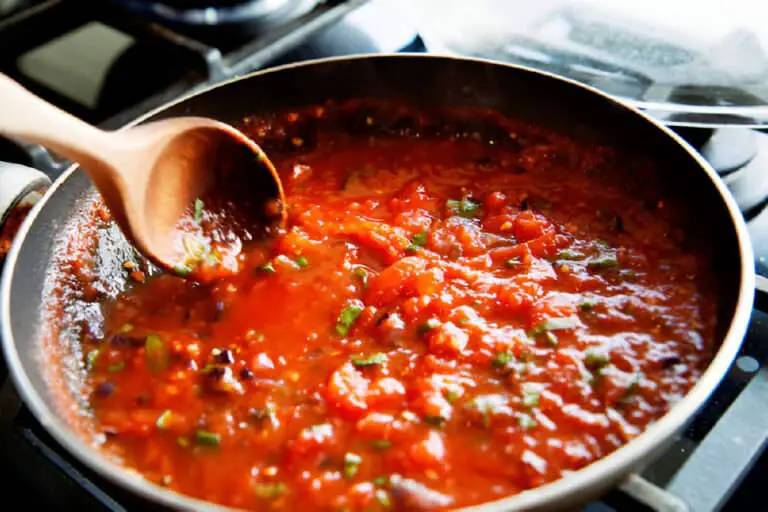Is It Better to Steam or Boil Brussels Sprouts? Pros and Cons
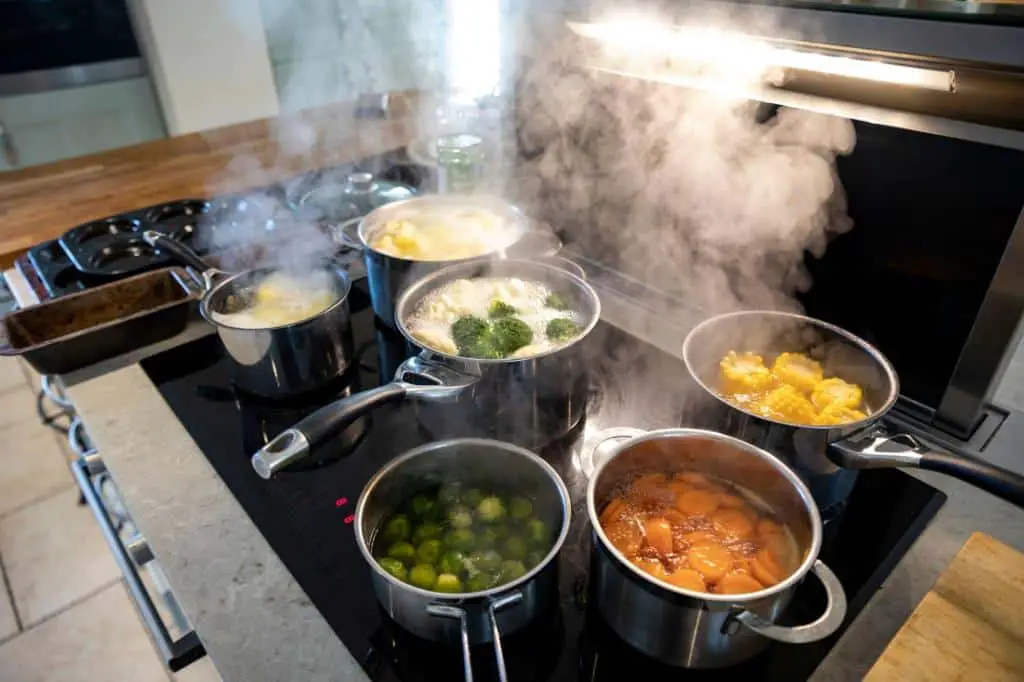
When it comes to Brussels sprouts, opinions can be as diverse as the recipes themselves. But one debate that often stirs up the culinary world is whether it’s better to steam or boil these vibrant green gems.
Both methods have their devoted fans, each claiming their way is the ultimate path to Brussels sprout perfection. But how do you decide which cooking technique is truly superior?
In this article, we’ll delve into the pros and cons of steaming and boiling Brussels sprouts, providing you with a comprehensive guide to help you make an informed decision. We’ll explore the impact on flavor, texture, and nutritional value, uncovering the secrets behind each method.
So, whether you’re a Brussels sprout enthusiast looking to elevate your cooking skills or simply curious about the best way to prepare these miniature cabbage-like wonders, join us on this culinary journey as we dive into the world of steaming and boiling. Get ready to unlock the secrets to Brussels sprout mastery!
Overview of Brussels Sprouts and Cooking Methods
Brussels sprouts, the miniature cabbage-like vegetable, hail from the Brassica oleracea family, alongside other cruciferous powerhouses like broccoli and kale. These emerald gems are not only visually appealing but also incredibly nutritious, making them a fantastic addition to any well-rounded diet. Bursting with vitamins, minerals, and dietary fiber, Brussels sprouts are a nutritional powerhouse that can contribute to overall health and well-being.
When it comes to cooking Brussels sprouts, there are a variety of methods available, but two popular techniques stand out: steaming and boiling. Steaming Brussels sprouts involves gently heating them with steam, which helps to preserve their vibrant color, texture, and flavor. This method ensures that the sprouts are cooked until they reach the desired level of tenderness while retaining their essential nutrients.
On the other hand, boiling Brussels sprouts involves immersing them in boiling water until they are tender. This method is slightly quicker than steaming and can be an excellent option for those seeking a softer texture. However, boiling may cause some loss of water-soluble nutrients, so it’s advisable to minimize the cooking time and avoid using excessive amounts of water.
Pros and Cons of Steaming Brussels Sprouts
Steaming Brussels sprouts involves placing them in a steamer basket or steaming tray over boiling water. This gentle cooking method has several benefits. Firstly, steaming helps retain the nutritional value of the sprouts as it minimizes nutrient loss. Secondly, it preserves the natural flavors and vibrant green color of the vegetable. However, steaming has drawbacks. It can be challenging to achieve caramelization, which adds depth of flavor, and there is a risk of overcooking if not closely monitored.
Pros of Steaming Brussels Sprouts:
- Preserves vibrant color and crisp texture.
- Enhances the natural flavors of the sprouts.
- Retains the nutritional content, including vitamins and dietary fiber.
- Promotes digestive health and a healthy gut.
Cons of Steaming Brussels Sprouts:
- May have a milder flavor compared to other cooking methods.
- Can take slightly longer than boiling or roasting.
- Prolonged cooking or excessive heat exposure may lead to some nutrient loss.
Read: Prepparing Brussel Sprouts Ahead of Time? Time-Saving Tips
Pros and Cons of Boiling Brussels Sprouts
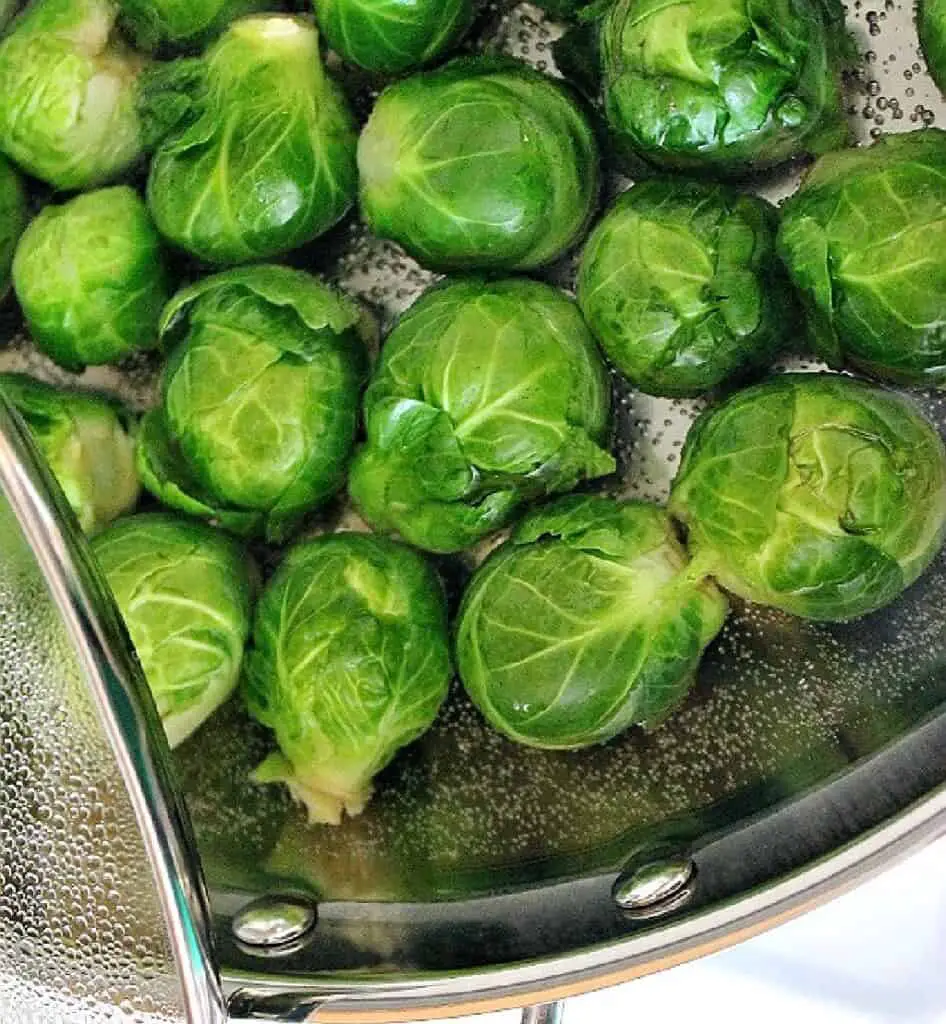
Boiling Brussels sprouts, a simple and straightforward cooking method, involves submerging the sprouts in a pot of boiling water until they reach the desired tenderness. Boiling offers a few distinct advantages worth considering.
Firstly, it is a relatively quick cooking process, making it an appealing option for those with limited time or in need of a speedy meal. The convenience of boiling allows you to enjoy the deliciousness of Brussels sprouts without spending excessive time in the kitchen.
Another advantage of boiling is that it allows flavors to infuse into the sprouts as they cook. This can result in a delightful taste profile, as the sprouts absorb the flavors from the boiling water. Adding spices, herbs, or a pinch of salt to the water can further enhance the overall taste of the sprouts, creating a delectable side dish or a flavorful component of a larger meal.
However, it’s important to be aware of the potential downsides of boiling Brussels sprouts. One drawback is the potential loss of nutrients during the cooking process. As some water-soluble vitamins and minerals may leach into the boiling water, prolonged boiling can diminish the nutritional content of the sprouts. To mitigate this, it’s advisable to minimize the cooking time and avoid using excessive amounts of water.
Additionally, if Brussels sprouts are boiled for too long, they can become mushy in texture. Overcooking can lead to a loss of their desirable crispness, resulting in a less appealing mouthfeel. To avoid this, it’s crucial to monitor the sprouts closely and remove them from the boiling water as soon as they reach the desired tenderness.
Pros of Boiling Brussels Sprouts:
- Quick cooking method, convenient for busy individuals.
- Allows flavors to infuse into the sprouts, enhancing taste.
Cons of Boiling Brussels Sprouts:
- Potential nutrient loss due to leaching into the cooking water.
- Risk of overcooking, resulting in a mushy texture.
Is It Better to Steam or Boil Brussels Sprouts?
So, is steaming or boiling better for Brussels sprouts? It ultimately depends on your personal preferences and desired outcome. If you prefer a slightly crunchy texture and want to maximize the nutrient retention, steaming is the way to go. On the other hand, if you prefer a softer texture and don’t mind a slight nutrient loss, boiling can be a convenient option. Experimenting with both methods will help you discover the cooking technique that suits your taste buds the best.
| Cooking Method | Advantages | Disadvantages |
| Steaming | Retains natural flavors and nutrients | Requires a steaming apparatus |
| Preserves vibrant green color | Sprouts remain slightly crunchy | |
| Boiling | Convenient and straightforward | Can result in mushy texture |
| Softens sprouts for a tender texture | Slight nutrient loss with longer cooking time |
Nutritional Value of Brussels Sprouts
Brussels sprouts are a nutritional powerhouse, providing a wide range of essential nutrients. They are particularly rich in vitamins C and K, fiber, and antioxidants. When it comes to cooking methods, the nutritional composition of Brussels sprouts can be influenced. Steaming helps to preserve the nutrients more effectively compared to boiling, as it limits exposure to water. Therefore, if retaining the maximum nutritional value is a priority, steaming is a preferable option.
Table: Nutritional Composition of Brussels Sprouts
| Nutrient | Amount per 1 cup (88g) |
| Calories | 38 |
| Carbohydrates | 8 grams |
| Fiber | 3.3 grams |
| Protein | 3 grams |
| Vitamin C | 75% of the DV |
| Vitamin K | 195% of the DV |
| Vitamin A | 19% of the DV |
| Folate | 15% of the DV |
| Potassium | 8% of the DV |
| Manganese | 12% of the DV |
(Source: USDA National Nutrient Database)
Effects of Cooking Methods on Taste and Texture
The choice between steaming and boiling Brussels sprouts can significantly impact the taste and texture of the final dish. Steamed Brussels sprouts tend to retain their natural crunchiness and have a more delicate flavor. On the other hand, boiled Brussels sprouts have a softer texture and may develop a slightly stronger taste due to the absorption of flavors from the cooking water.
The preference for taste and texture is subjective, and it often comes down to personal preference and the desired outcome of the dish.
| Steamed Brussels Sprouts | Boiled Brussels Sprouts |
| Retains natural crunchiness | Softer texture |
| Delicate flavor | Absorbs flavors from boiling |
In summary, steaming Brussels sprouts results in a crunchier texture and a more delicate flavor profile, while boiling leads to a softer texture and the potential for a stronger taste due to flavor absorption.
Factors to Consider When Choosing a Cooking Method
- Personal preferences regarding taste and texture:
- Steaming Brussels sprouts generally results in a crisper texture, while boiling tends to yield a softer texture.
- Steamed Brussels sprouts have a milder, more delicate flavor, while boiled Brussels sprouts may have a slightly stronger taste due to flavor absorption.
- Time constraints and convenience:
- Steaming Brussels sprouts usually takes longer than boiling, as it requires the gradual cooling of the vegetable.
- Boiling Brussels sprouts is a relatively quick and straightforward method, making it suitable for those with limited time or in a hurry.
- Nutritional goals and health considerations:
- Steaming Brussels sprouts helps to retain more nutrients, as it minimizes nutrient loss during cooking.
- Boiling Brussels sprouts may lead to some nutrient loss, particularly when the cooking water of Brussels sprouts is not consumed or used in other dishes.
Recipe Ideas for Steamed Brussels Sprouts
Steaming Brussels sprouts offers a versatile and healthy cooking option. Here are a few recipe ideas to inspire your culinary endeavors:
- Simple Steamed Brussels Sprouts: Steam the sprouts until tender, then toss them with a drizzle of olive oil, a sprinkle of sea salt, and a squeeze of lemon juice.
- Steamed Brussels Sprouts with Garlic Butter: Steam the sprouts and then sauté them in a pan with garlic-infused butter until lightly caramelized. Season with salt and pepper for an added punch of flavor.
- Steamed Brussels Sprouts Salad: Steam the sprouts and toss them with a medley of fresh vegetables, such as cherry tomatoes, cucumber slices, and red onion. Dress with a light vinaigrette for a refreshing salad.
Recipe Ideas for Boiled Brussels Sprouts
Boiling Brussels sprouts can create tender and flavorful results. Consider trying these recipes:
- Classic Boiled Brussels Sprouts: Boil the sprouts until fork-tender, then drain and toss with melted butter, salt, and a sprinkle of freshly ground black pepper.
- Boiled Brussels Sprouts with Balsamic Glaze: Boil the sprouts until tender, then transfer them to a pan and drizzle with a reduction of balsamic vinegar. Allow the glaze to caramelize slightly before serving.
- Boiled Brussels Sprouts with Pancetta: Boil the sprouts until cooked, then sauté them with crispy pancetta and a touch of garlic. The pancetta adds a savory and smoky flavor to the dish.
Alternative Cooking Methods for Brussels Sprouts
While steaming and boiling are popular methods, there are other ways to prepare Brussels sprouts. Consider these alternative cooking methods:
- Roasting: Toss Brussels sprouts in olive oil, sprinkle with salt and pepper, and roast in the oven until browned and crispy. Roasting intensifies the natural flavors and brings out a delightful nuttiness.
- Grilling: Skewer Brussels sprouts and grill them over medium heat until tender and slightly charred. This imparts a smoky flavor and adds a delightful grilled texture.
- Sautéing: Heat a pan with olive oil or butter, add Brussels sprouts, and cook until they are lightly browned and tender. Sautéing allows for quick and flavorful cooking, and you can add herbs or spices for extra taste.
Read: How Long to Boil Brussels Sprouts Before Roasting? Timing Is Key
Conclusion and Personal Preferences
To recap, both steaming and boiling Brussels sprouts have their own pros and cons. Steaming retains more nutrients and offers a delicate flavor and crisper texture. Boiling is convenient and can infuse the sprouts with additional flavors. Ultimately, the choice between the two methods depends on your personal preferences, time constraints, and nutritional goals.
Personally, I enjoy the crispness and milder taste of steamed Brussels sprouts. I find that steaming preserves their natural qualities while allowing for versatility in seasoning and accompanying dishes.
However, if you prefer a softer texture and don’t mind a slightly stronger taste, boiling can be a suitable option. I recommend experimenting with both methods to discover your own preferences and find the perfect cooking technique for your Brussels sprouts.
Remember, cooking is an art, and the joy lies in exploring different methods to create delicious and satisfying dishes. Whether you steam, boil, roast, grill, or sauté Brussels sprouts, the key is to enjoy the process and savor the wonderful flavors this versatile vegetable has to offer.
FAQs
Can you boil Brussels sprouts without losing nutrients?
Boiling Brussels sprouts can lead to some nutrient loss, particularly water-soluble vitamins like vitamin C and B vitamins. To minimize nutrient loss, use the minimum amount of water required for boiling and avoid overcooking. You can also use the cooking water in other recipes to retain some nutrients.
Are steamed Brussels sprouts healthier than boiled?
Both steamed and boiled Brussels sprouts offer health benefits. Steaming helps retain more nutrients, while boiling may result in slight nutrient loss. However, the difference is minimal, and both cooking methods can still provide valuable vitamins, minerals, and antioxidants.
Can I steam and then boil Brussels sprouts?
Yes, you can steam Brussels sprouts then boil them. This method can help retain nutrients through steaming and achieve caramelization and additional flavors through boiling. Start by steaming the sprouts until partially cooked, and then transfer them to a hot skillet with a little oil to finish cooking and develop a flavorful exterior.
How do I prevent boiled Brussels sprouts from becoming mushy?
To prevent boiled Brussels sprouts from becoming mushy, make sure to monitor their cooking time closely. Begin checking for doneness after around 6 to 8 minutes of boiling. Once they are tender, remove them from the boiling water promptly to prevent overcooking. Plunge them into ice water immediately to stop the cooking process and preserve their texture.
What is the best way to season steamed Brussels sprouts?
Steamed Brussels sprouts offer a delicate flavor that can be enhanced with various seasonings. Popular options include drizzling them with a little olive oil, sprinkling them with sea salt and freshly ground black pepper, or tossing them with a tangy vinaigrette. You can also experiment with herbs and spices like garlic powder, smoked paprika, or balsamic glaze to add depth and complexity to their taste. Adjust the seasonings Brussels sprout to your personal preference and enjoy the flavorful results.
How do I choose fresh Brussels sprouts at the grocery store?
When choosing fresh Brussels sprouts, look for tightly closed buds with a vibrant green color. Avoid sprouts that are yellowing, wilted, or have blemishes. The smaller ones tend to be sweeter and more tender, while the larger ones may have a stronger flavor.
Can I eat Brussels sprouts raw?
Yes, you can eat Brussels sprouts raw. They have a crunchy texture and a slightly bitter taste. Shave them thinly and use them in salads or coleslaws for a fresh and nutritious addition to your meal.
What are some popular flavorings or seasonings for Brussels sprouts?
Popular flavorings for Brussels sprouts include balsamic vinegar, maple syrup, honey, bacon, Parmesan cheese, garlic, and lemon juice. These ingredients can complement the sprouts’ natural flavors and add depth and complexity to the dish.
Are there any common cooking mistakes to avoid when preparing Brussels sprouts?
When cooking Brussels sprouts, avoid common mistakes such as overcooking, which can result in a mushy texture, or underseasoning, which can make them bland. Also, remember to trim the stems and remove any discolored or damaged ones.

